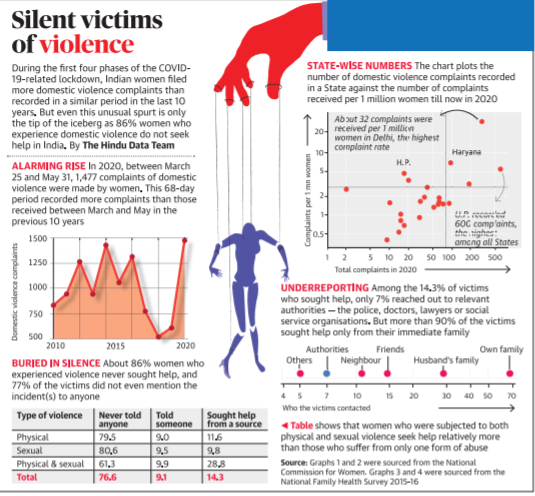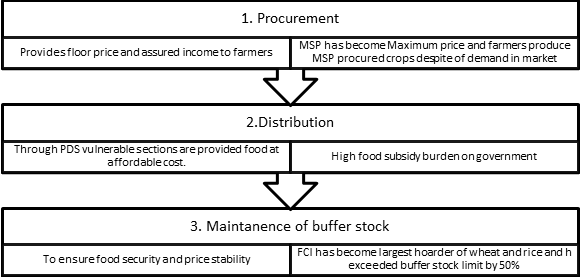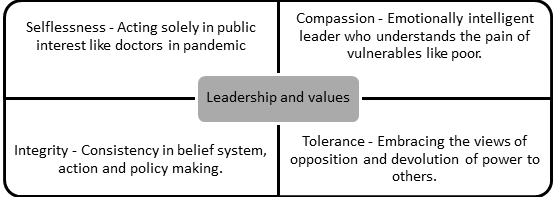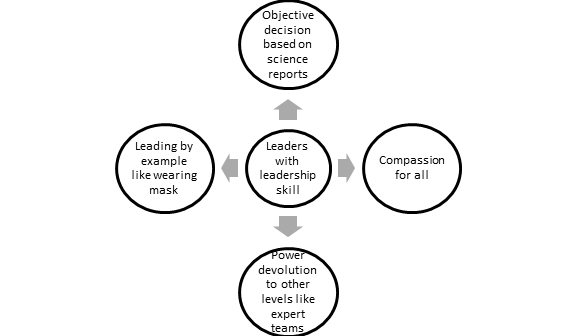ForumIAS announcing GS Foundation Program for UPSC CSE 2025-26 from 19 April. Click Here for more information.
ForumIAS Answer Writing Focus Group (AWFG) for Mains 2024 commencing from 24th June 2024. The Entrance Test for the program will be held on 28th April 2024 at 9 AM. To know more about the program visit: https://forumias.com/blog/awfg2024
Good evening dear reader.
Here is our 9pm current affairs brief for you today
About 9 PM Brief- With the 9 PM Daily Current affairs for UPSC brief we intend to simplify the newspaper reading experience. In 9PM briefs, we provide our reader with a summary of all the important articles and editorials from three important newspapers namely The Hindu, Indian Express, and Livemint. This will provide you with analysis, broad coverage, and factual information from a Mains examination point of view.
About Factly- The Factly initiative covers all the daily news articles regarding Preliminary examination. This will be provided at the end of the 9 PM Brief.
Dear Aspirants,
We know for a fact that learning without evaluation is a wasted effort. Therefore, we request you to please go through both our initiatives i.e 9PM Briefs and Factly, then evaluate yourself through the 10PM Current Affairs Quiz.
We plan to integrate all our free daily initiatives to comprehensively support your success journey.
Happy Learning!
9 PM for Main examination
GS-2
- What changed in India-Nepal ties?
- Understanding China ‘s strategic objectives regarding India
- The working of Rajya Sabha
- Fighting a double pandemic: On Rising Domestic Violence Cases
GS-3
- Mobilising resources with FCI Reforms
GS-4
- Relation between Leader and leadership
9 PM for Preliminary examination
FACTLy
1.What changed in India-Nepal ties?
Source: The Indian Express
Syllabus: GS 2-India and its neighbourhood- relations
Context: Nepal’s Parliament has cleared a map that includes territories with India — Limpiadhura, Lipulek and Kalapani.
Special ties between India and Nepal:
- Resolving standoffs:
- Previous standoffs such as the economic blockade of 2015 were effectively resolved through direct negotiations, back-channel diplomacy and an accommodative spirit on both sides.
- The Backchannels were used during major trade embargos since the 1970s such as Indian royalty.
- Favouring India:
- In 1960’s,Nepal convincingly assured India that a road built to connect Nepal with Tibet had only developmental and no strategic significance.
- In the 1980s, Nepal annulled a contract with China to build the 210-km Kohalpur Banbasa Road closer to the Indian border after India raised security concerns.
- Close association of India with Nepal army: The chief of each national army has enjoyed the status of Honorary General of the other side on a reciprocal basis since 1950.
The influence of India in Nepal has reduced over the years.
Troubled phase in Nepal-India relations:
- Ouster of monarchy: The turning point in relations came with the 12-point understanding among Nepal’s eight political parties in November 2005 in Delhi which led to the ouster of monarchy. The crucial issues such as the abolition of monarchy, declaration of Nepal as a secular country etc. then were not discussed sufficiently in the Parliament of Nepal.
- Losing of allies in Nepal:
- India took the lead role in transforming Nepal into a secular republic which set off events leading to India losing its clout and allies.
- For example-the Nepali Congress was often branded “pro-India” by Communists for their close ties with Indian National Congress and socialists. However, following the 12-point agreement, the Nepali Congress was forced to accept the lead role of Maoists (Communists) in the impending political change.
- Imposed secularism: The EU took a very open stance that secularism will have no meaning without the right to conversion being incorporated as a fundamental right in the new Constitution. This led to resentment among the majority population about this “imposed secularism”.
- Change in perception: Over the years, India’s focus on Nepal appears driven more by security concerns and threat perception than by promoting a soft power-based approach.
- Influence of China:China has increased its presence and investment in Nepal by targeting tourism, post-earthquake reconstruction, trade and energy etc.
Way Forward
India must again begin ‘valuing’ common civilisational , cultural, historic and people to people ties to resolve the current dispute.
2.Understanding China ‘s strategic objectives regarding India
Source: The Hindu
Syllabus: GS 2- India and its neighbourhood- relations
Context: A violent face-off happened between India and China in Galwan Valley.
Background:
- 1962 War:
- Nehru’s thinking was influenced by his idealistic notion of Afro-Asian solidarity and his suspicion of America’s strategic designs.
- War debacle: It was blamed on the government’s military unpreparedness and its inability to understand China’s larger strategic objectives.
- Current situation:The China took India’s decision to separate Ladakh from Jammu and Kashmir as an India’s attempt to change the status quo in Aksai Chin.
Though, India is now much better prepared to face China’s challenge on the ground but we need to understand China’s objectives.
China’s strategic objectives:
- Ensuring Its dominance:China doesn’t want India to be in the same league and it try to achieve it with periodic localised assaults across the Line of Actual Control (LAC) if India tries to assume a position of equality.
- Warning against Containing China: China doesn’t want India to actively oppose its interests in the Indo-Pacific region. It want to maintain its dominance by warning India not to align with the U.S. and its allies such as Japan and Australia.
- Engaging India with problems in its immediate neighbourhood:China doesn’t want India to act as an alternative pole of power to China in the broader Asian region.
- Neutralising India’s conventional power superiority over Pakistan: It achieve this by supporting Pakistan economically and militarily including the sharing of nuclear weapons designs.
These objectives are essential for a realistic Indian response to China’s aggressive policies along the LAC.
India’s response and Way Forward
India’s main strategic goal should be the adoption of carefully calculated policies that neutralise China’s diplomatic and military power in the Asia-Pacific region without making India appear as a surrogate for other powers.
3.The working of Rajya Sabha
Source: The Hindu
Syllabus: GS 2-Parliament and State legislatures—structure, functioning, conduct of business, powers & privileges and issues arising out of these.
Context: Another round of Rajya Sabha (RS) elections were held for 19 seats across several States.
Background:
- Defection: Eight Congress MLAs left the party in Gujarat after the announcement of RS elections. This enabled the victory of an extra BJP candidate to the RS.
- Poaching of MLAs: In Rajasthan, the BJP had strength to elect one member but it fielded two which led to speculation of poaching.
- Change in numbers: The ruling BJP now has 86 members in the Rajya Sabha which is the highest number for the party in the Upper House while the Congress now has 41.
Importance of Rajya Sabha:
- Power sharing: The upper house works as a Council of States. It represents the intersts of the states. It institutionalises the sharing of power between the Centre and the State under India’s federal structure. There are certain exclusive powers of Rajya Sabha such as power to transfer a subject from the State List to Union List for a specified period.
- Forum: The House of the Elders is considered an exalted forum of scholarship and statesmanship as it has some nominated members too.
- Deliberations: They are critical for a vast and diverse country like India.
- Reviewing house: Its function is to improve legislation passed by the Lower House and is not one of obstruction.
- Checks and balances: It is supposed to act as a check on the legislation.It is a body to check and scrutinise the laws.
- Permanent house: The Rajya Sabha doesn’t dissolve like the Lok Sabha.
But it is losing its value in the last few years.
Losing sheen of Rajya Sabha:
- The steady entry of celebrities and business tycoons has not made a serious contribution to the RS’s working.
- Reduction in Deliberations: There has been reduction in deliberations of Rajya Sabha. For example- the government has arbitrarily labelled bills as money bills to bypass scrutiny.
Way Forward
There should not be any pushing of legislation through both houses as certain have some far-reaching effects on the country. It is imperative that members work across party lines to uphold Parliament’s constitutional role.
4.Fighting a double pandemic: On Rising Domestic Violence Cases
Source: The Hindu
Syllabus: Welfare schemes for vulnerable sections of the population by the Centre and the States and the performance of these schemes; mechanisms, laws, institutions and Bodies constituted for the protection and betterment of these vulnerable sections.
Context: In response to the exponential increase in domestic violence cases during Covid-19 pandemic, the Commonwealth Secretariat is working alongside partner organizations on measures which will help its 54 member countries to combat the menace.
Domestic Violence in India during Covid-19 pandemic
Reasons for Increased domestic violence i during the pandemic lockdown
The issue of domestic violence is rooted in the very nature of the patriarchal society. Often referred to as “intimate terrorism”, domestic violence is an expression the very desire to gain and maintain power and control over women.
The major reasons for increasing domestic violence during Covid-19 lockdown are as follows:
- Tension and strain created by security, health, and financial worries
- Confinement and lack of access to alcohol leading to interpersonal violence and abuse.
- Domestic labor becomes taxing during a lockdown if not distributed equally. The woman is expected to bear the load and violence increase if she fails to do so.
- Lack of institutional support, inability to complain during lockdown aggravates the problem.
Women in Crisis Situations
- In West Africa, 60% of total deaths in the 2014 Ebola virus outbreak were women.
- Following the Canterbury earthquake in New Zealand, there was a 53% rise in domestic violence.
Steps taken to address rising domestic violence during lockdown
- NCW launched a WhatsApp number – 7217735372 to report domestic violence during lockdown
- ‘Suppress Corona, not your voice’: It is an initiative launched by Uttar Pradesh government. Under the initiative, a female police officer visits house to register the complaint and warn the perpetrator.
- Kerala government announced a WhatsApp number – 9400080292 to report domestic violence during the lockdown.
- “Red dot” initiative by non-profit WEFT (Women’s Entrepreneurs for Transformation): Under this, domestic violence victims are asked to draw a red dot on their palm to seek help and alert their neighbors and authorities.
Suggested Measures:
- Urgent action to ensure that during this COVID-19 pandemic, victims of abuse can access the health care they need, including mental health services.
- Psychosocial support and online counselling should be boosted using technology-based solutions.
- Provide emergency transportation to women seeking refuge from domestic violence
- Ensure access to police assistance, and justice services.
- Initiate campaigns to raise awareness and enhance support system
- Media outreach to alert to the facts and the dangers of domestic violence and encouraging positive steps like sharing care responsibilities at home
- To ensure financial independence, post COVID-19 strategies should include dedicated funding and support for micro, small and medium sized businesses and the informal sector, which are predominantly led by women.
Conclusion: The Commonwealth has decided to hold a virtual follow-up session to the Women Affairs Ministerial Meeting that was held in September 2019, to set out an action plan to support women and girls during the COVID-19 crisis and also extend its support to the planned UN Declaration on Women and COVID-19
5.Mobilising resources with FCI Reforms
Source – Indian express
Syllabus – GS 3 – Issues related to direct and indirect farm subsidies and minimum support prices; Public Distribution System- objectives, functioning, limitations, revamping; issues of buffer stocks and food security
Context – Fighting the coronavirus on one hand, and defending the borders from Chinese incursions on the other will require mobilising large resources for which FCI can be transformed.
FCI – The Food Corporation of India (FCI) was set up in 1965 under the Food Corporations Act, 1964 with the primary duty to purchase, store, move/transport, distribute and sell food grains and other foodstuffs.
Objectives and associated issues: The intervention of Government has led to a disconnect between demand and supply of grains in food grain markets in following way:
Figure 1 – Objectives along with challenges
Suggested solutions to reform the three functioning stages of FCI:
- Procurement– If food grain markets are opened for active participation of private players with Government as an equal player, competition would lead to more efficiency in the operations and development of adequate infrastructure in storage and warehousing.
- Example -The recent amendment of the Essential Commodities Act can come handy to instil confidence in the private sector for building large scale storage.
- Distribution– As per Economic Survey 2020, the coverage of NFSA needs to be restricted to the bottom 20 per cent and the issue prices for others could be linked to the procurement prices. A better alternative would be giving income transfers to consumers through Direct Benefit Transfers (DBT) to reduce subsidy burden.
- Buffer stock – Liquidating “excess stocks” through open market operations by inviting the private sector in a big way to hold these stocks, at whatever reasonable market price it can get.
By not liquidating it, FCI will keep incurring unnecessary interest costs of about Rs 8,000-10,000 crore per annum.
Way Forward – Given fiscal constraints, there is always a trade-off between allocating money through subsidies and increasing investments. As investments are the crucial input to increase in productivity, the increasing focus on subsidies via FCI is harming the growth of agricultural sector in the long-run. This imbalance between subsidies and investments needs to be urgently corrected for sustainable development of agriculture.
6.Relation between Leader and leadership
Source – Livemint
Syllabus – GS 4 – Ethics and Human Interface
Context – The current pandemic and the policies adopted by leaders across the world has shown the difference between leader and leadership.
Leader – A leader is a person who holds high position as well as power in political, economic and social organisation and leads the people to attain goals. He may or may not have leadership qualities which are innate as well as nurtured by people themselves.
Leadership – It comprises of the skills and qualities with which leaders rally people towards the goal. The qualities and foundational values required in a leader are:
Relation between the two is explained below:
Figure 1 – The Venn diagram depicting the relation between the two
- Leaders having the leadership qualities: History has many examples of such leaders who have inspired people through their values and actions. Example – Mahatma Gandhi had the support of masses in all his movements against the British Empire.
- COVID – The strong leaders having leadership qualities have tackled pandemic with following approach:
Figure 2 – Leadership qualities exhibited in pandemic
- Not all leaders have leadership qualities: Consider, Chilean dictator Augusto Pinochet (1973-1990), who came to power on the back of a US-supported coup and he left behind a legacy of human rights abuse. Thus, not all strong leaders necessarily have the leadership qualities to promote well-being of all. Same is true with leaders who have acquired power and position because of dynastic rule.
- COVID – In some countries with so-called strong leaders, the response to the pandemic has been unilateral, arbitrary, whimsical, chaotic and non-scientific. In some cases, the leaders have provided undue primacy to the economy and business over individual lives. Thus, they have used the covid opportunity to appropriate additional power and deepen social divides.
- Not all those who have leadership qualities are leaders: There are many in the society who have the potential to become leaders, but the structure of society is such that it prevents new leaders from rising up the ladder. For Example, communist nations have single party rule with power concentrated in a single leader and it prevents others from exercising their leadership skills.
Way Forward – Leader is one who knows the way, shows the way and walks the way. COVID has created the perfect opportunity for true leaders to exhibit leadership and it also has highlighted the leaders who just have power without any sense of how to use it.
9 PM for Preliminary examination
Click on “Factly articles for 22nd June 2020”
https://factly.forumias.com/factly-articles-for-22nd-june-2020/











